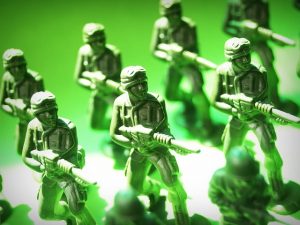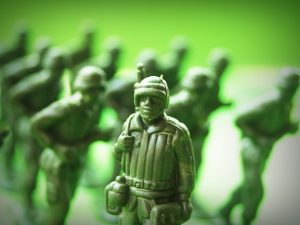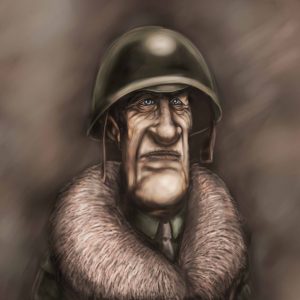If literature isn’t your thing and you’ve been reading long, boring novels all semester, the chance to read and write about a short story might be just what you need to get interested in literature again.
After all, everyone loves a good story, and a short one (especially when it comes to reading something you’re not so thrilled about) is even better.
So if you’ve found yourself in that seemingly never-ending battle of how to do a short story analysis, here’s what you need to know.
Differences Between a Short Story and a Novel—And Why It’s Important to Your Short Story Analysis
Whether you’re writing a literary analysis about a short story, novel, play, or other type of literature, each genre will include some of the same elements, such as rising and falling action, conflict, and resolution.
Before you begin writing, though, it’s important to understand three key differences between a short story and a novel.
1. Length and detail
It’s obvious that a short story is shorter than a novel. (That’s why it’s called a short story!) What’s important to remember about the length of a short story, however, is that, because a short story is just that—short—it can only include so much detail.
A novel allows the author hundreds of pages to meander and eventually reach a point. A short story writer only has a few pages to accomplish the same goal.
Think of short stories like poems. Poems have a small space to pack in a lot of meaning. Thus, poets choose their words carefully. No words are wasted. The same is true for short stories. Writers need to be precise with their word choices and make every word count.
By the way, you should make every word count in your writing too. To learn more, read Why Eliminating Wordiness Is So Important for Your Essay.
2. Character development
Remember, short stories have limited space, so characters might not be as fully developed as they would be in a novel. Short stories are likely to have fewer characters than novels too.
This means that, as a reader, you’ll need to do a lot of inferring and careful analysis to get inside the characters’ heads.
Want to know about character analysis? Check out How to Write a Character Analysis That Works.
3. Time frame
The short length of short stories also means that they usually take place in a short time frame. Take “The Story of an Hour” by Kate Chopin, for instance. The entire plot unfolds in the space of—yep, you guessed it—about an hour.
This limited time frame of short stories means that writers don’t have a lot of space to develop varying plot lines, and they will focus all of their details in just a few scenes.
So as a reader, you need to pay attention to everything that’s going on. If you miss a line or two, you might miss the whole point of the story.
With the differences of short stories and novels in mind, it’s time to plan your battle strategy before you actually start reading.
Before You Start Reading a Short Story
 1. Understand the assignment
1. Understand the assignment
Of course, it’s always important that you understand the assignment guidelines, but it’s crucial that you know what type of paper you’re supposed to be writing before you actually begin reading the short story you’ll be analyzing.
Why is this so important? If you know the assignment, you’ll know what to look for (and take notes on) as you read.
For instance, if you know you’re supposed to write about the symbolism in “Miss Brill,” you can look for clues along the way and jot down anything that seems vaguely symbolic (like the fur she wears or the box in which she stores her fur).
Don’t just limit your note-taking to the key focus of your paper, though. Make sure that you take notes on anything you deem important, such as setting, character traits, and key plot points.
2. Brush up on literary terms
If you’re taking notes on the story, it’s also important that you brush up on literary terms. This is just a wild guess, but I’m pretty sure that, if you don’t have a clue what a symbol is, you won’t be able to recognize one when you see it.
Take a look at 8 Components of a Smart Literary Analysis or 15 Literary Terms You Need to Know to Write Better Essays for more information about the literary terms you might encounter in short stories.
You might also want to check out this list of literary terms for a more complete listing.
With your plans in place, you’re ready to march into battle.
Writing a Short Story Analysis
 1. Review your notes and outline ideas
1. Review your notes and outline ideas
You’ve spent all that time taking notes, so now is your chance to put them to good use. Look over the information, and start to plan the structure of your paper. Think about what you’ll focus on and what your key arguments will be.
As you outline, consider your thesis statement. A thesis statement is like a road map to your essay, and it will help you decide what your key arguments will be.
For instance, if you’re writing about the short story “The Lottery,” you might focus on symbolism. A quick outline might begin with a thesis similar to the following statement:
“The Lottery” presents three prominent symbols of death: the black spot, the tattered black box, and Mr. Graves.
The outline would then include a few notes as to how each of these items are presented in the short story and how they symbolize death.
If you want assistance with outlining, read 7 Essay Outline Templates to Get Your Essay Going.
2. Draft the arguments
Once you’ve established your arguments, it’s time to actually write the body paragraphs.
The body paragraphs should provide adequate detail to convince your readers. In other words, you need evidence: things like examples and direct quotes from the story. You might even include outside research if it’s appropriate for your paper. (Just make sure you use credible sources!)
Pro Tip: Make sure your analysis and commentary aren’t too heavily focused on summarizing the short story. Need help? Read How to Write a Good Essay: Stop Summarizing, Start Commentating.
3. Draft introduction and conclusion paragraphs
There’s no official rule that says you have to write the introduction first and the conclusion last.
Sometimes it can be more helpful to write the introduction after you’ve written the body paragraphs because you’ll have a better sense of what your paper is about. You’ll also be able to create a strong hook to grab your reader’s attention.
Check out How to Write an Essay Introduction in 3 Easy Steps and How to Write a Killer Essay Conclusion for more tips.
If you want to see what a finished short story analysis looks like, take a look at these sample essays:
- An Analysis of the Setting in T. Coraghessan Boyle’s Short Story Greasy Lake
- A Literary Analysis of Flannery O’Connor’s Short Story A Good Man is Hard to Find
Victory!
You’ve won the battle and have completed your short story analysis, but you still have to win the war and earn your stripes from your prof.
To make sure you get recognized for your hard work and bravery, let a Kibin editor help with revision.
At ease, soldier!




